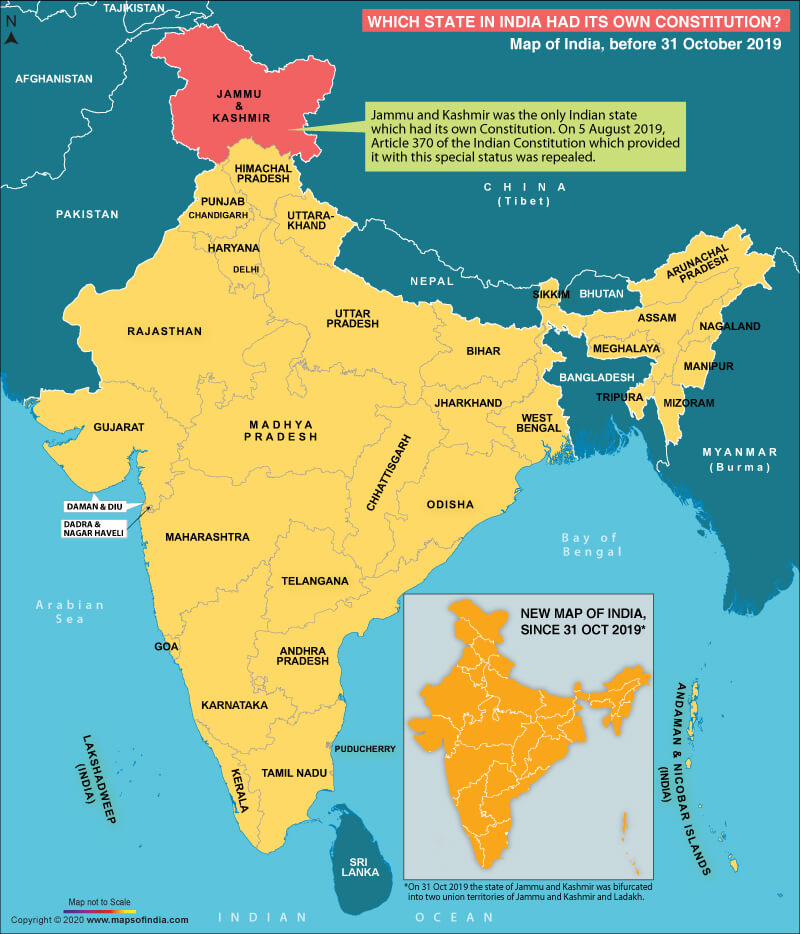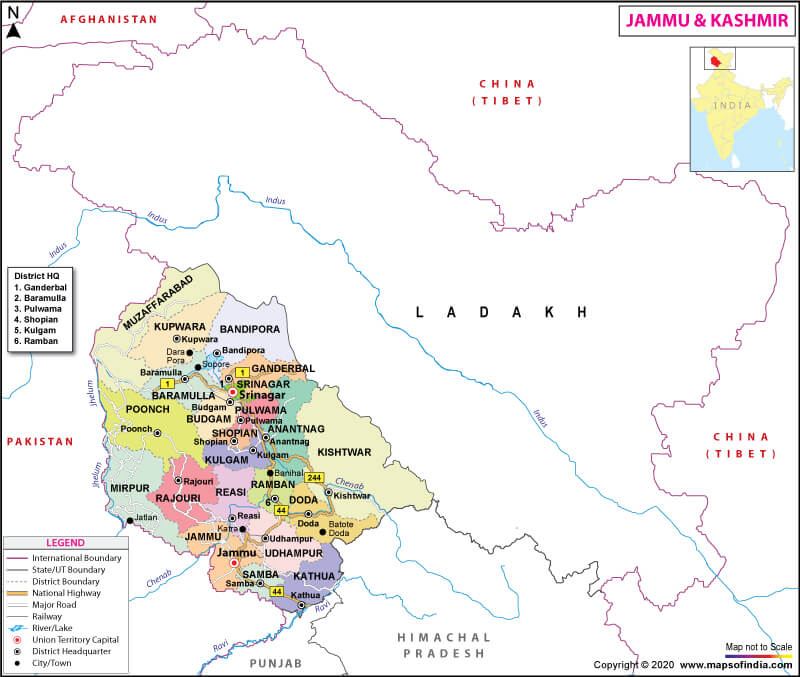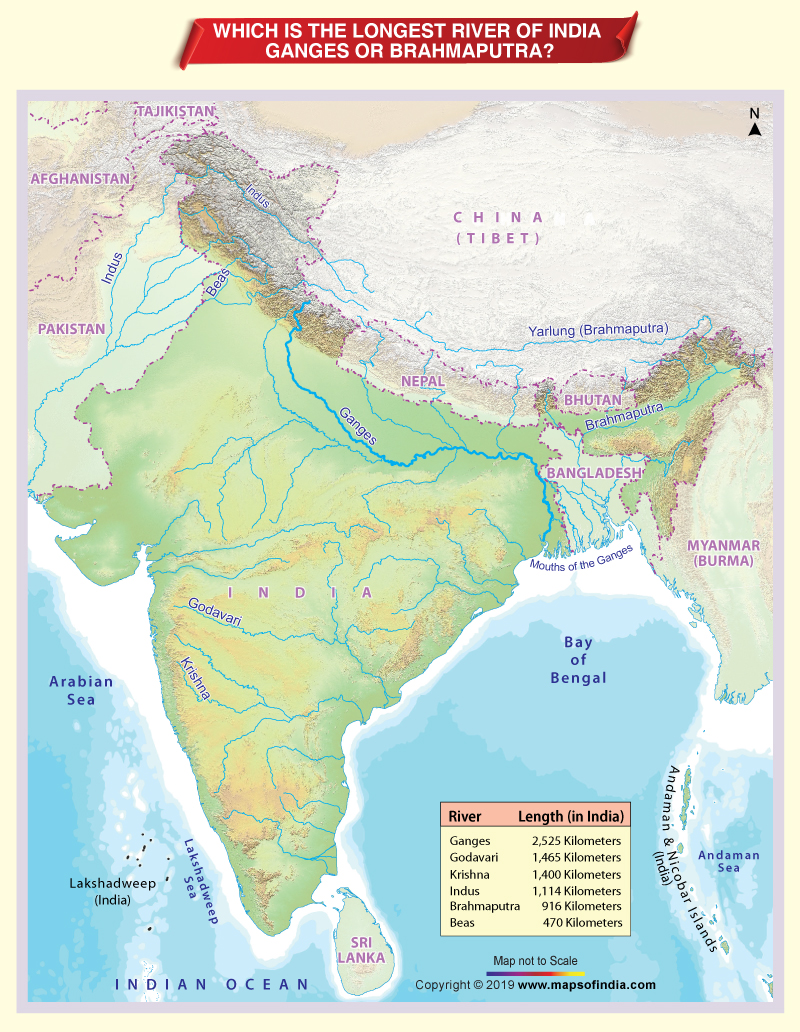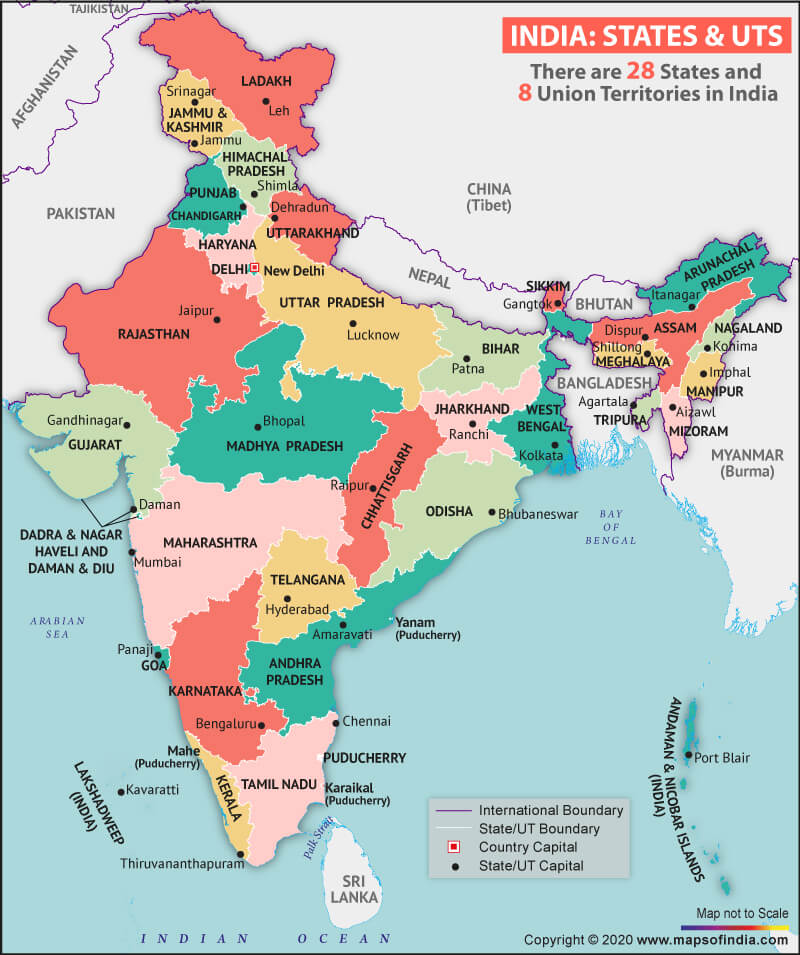

Jammu and Kashmir was the only Indian state which had its own Constitution.
On 5 August 2019, the article of the Indian Constitution (article 370) which provided the state of Jammu and Kashmir this special status to have its own Constitution was repealed.
The Constitution of Jammu and Kashmir, which was adopted on 17 November 1956 and came into effect on 26 January 1957, was a legal document that established the framework of government at the state level (in the erstwhile state of Jammu and Kashmir). The Constitution had 158 articles divided into thirteen parts and seven schedules. Twenty-nine amendments had been introduced in the Constitution by 2002.
In 1947, the partition of British India into India and Pakistan took place. The princely states were given a choice to join either India or Pakistan or stay independent. At that time, the state of Jammu and Kashmir was ruled by Maharaja Hari Singh who initially chose to be independent and not join any of the two countries. But, Pakistan attacked Kashmir by sending Tribesmen. Because of this attack, Maharaja Hari Singh agreed to merge with India by signing the Instrument of Accession with some conditions, which led Kashmir to be a part of India but with a special status.
Under Part XXI of the Constitution of India, which is titled “Temporary, Transitional and Special provisions”, Article 370 was introduced after the independence which provided the state of Jammu and Kashmir this special status to have its own Constitution. Article 370 was framed after intense negotiations of five months between Jawaharlal Nehru and J&K Prime Minister Sheikh Mohammad Abdullah.
According to Article 370, the Parliament of India and the Union Government’s jurisdiction extended over very few matters with respect to the state of Jammu and Kashmir. The actions in all issues, which are not explicitly vested in the Federal government, have to be supported by the state legislature. In Jammu and Kashmir, residual powers were also with the state government. It is because of these reasons that this state used to enjoy autonomy, unlike the other Indian States. Jammu and Kashmir also had the power to have its state flag, which the other States did not have. Till 1965, the other notable difference between Jammu and Kashmir and the other Indian States was that the head of the state in Jammu and Kashmir was called Sadr-e-Riyasat, while in other States the head was called Governor.
Abrogation of Article 370
On 5 August 2019, article 370 of the Indian Constitution which provided the state of Jammu and Kashmir this special status was abrogated. All the provisions of the Constitution of India were made applicable to the state of Jammu and Kashmir. Thus the state of Jammu and Kashmir ceased to have its own Constitution. Further the Jammu and Kashmir Reorganisation Act, 2019 passed on 31 October 2019 by the parliament, led to the bifurcation of the state of Jammu and Kashmir into two union territories of Jammu and Kashmir and Ladakh. While the union territory of Jammu and Kashmir came into existence with a legislature, the union territory of Ladakh does not have a legislature.




